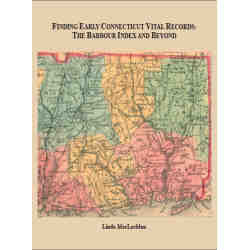
Today we are sharing some of the expert advice concerning deeds and other land records that is available in the 4th edition of The Researcher’s Guide to American Genealogy, by Val Greenwood. The mere handful of tips Mr. Greenwood provides below could make all the difference in your research. If you already own a copy of the 4th edition, you’ll find this excerpt in Chapter 20, pp. 510-511.
“When clues to identity are hard to find and family connections are scarce, it is worthwhile to go into the land records in greater depth to mine the hidden value so often overlooked. Consider the following approaches. Though they are often time-consuming, they can be worth all the time they take:
- Look for companion documents. When you have identified a land record of interest to you, you should look at all of the deeds for a few pages before and a few pages after it. In this search, look for two things. First, identify any records where the parties are the same (or obviously connected) and where the land is in the same general area. Study these records, abstract them (see next chapter), and identify what useful data pertinent to your problem they might contain.
- Check for deeds on adjoining properties. Tract books, land surveys, plat maps, and property descriptions in deeds to or from your ancestor often give the names of those persons whose property is adjacent to his. Deeds pertaining to those adjacent tracts may contain valuable data on the subject property. Always consider that the two owners may be related, that they may have come together from the same place of origin, or that the properties may have been two parts of the same original patent or grant. Clues of great worth (and even specific details) relative to these and other matters that are not in your ancestor’s deeds might be found in such documents.
- Locate and plat out the property description of your ancestor’s land on a county map. This can be helpful in many ways, but most importantly, it shows you the location of the property in relation to such things as cemeteries and churches—information that may prove invaluable. If the land is in a public land state, you can prepare township-range model sheets using the diagram in Figure 1 of Chapter 19. Using a blank model sheet, locate the subject property. Next, look up the section in the tract book and list all real property within a two-mile radius and check it out. Records relating to these adjacent tracts just might contain pertinent data or useful clues, as already stated.
- Names of the owners of the adjacent property can also be used in connection with the census records to identify whether your ancestor is the landowner in question when there is more than one person with the same name.
- Account for both the acquisition and disposition of every tract of our ancestor’s land. Elizabeth Shown Mills suggested in her presentation to the National Genealogical Society’s 1985 conference in Columbus, Ohio, that you make an “in” and “out” table with five columns. In column 1, write the land’s legal description, columns 2 and 3 tell the date and means of acquisition, and columns 4 and 5 tell the date and means of its disposal. By failing to account for both the “ins” and the “outs,” you risk missing important clues and/or family history evidence.
- It is also recommended that you check tract books (or land-entry books), where applicable, to determine if your ancestor got his land in the public domain from the federal government, and then, if so, seeking the details of the grant or purchase in appropriate records.”




